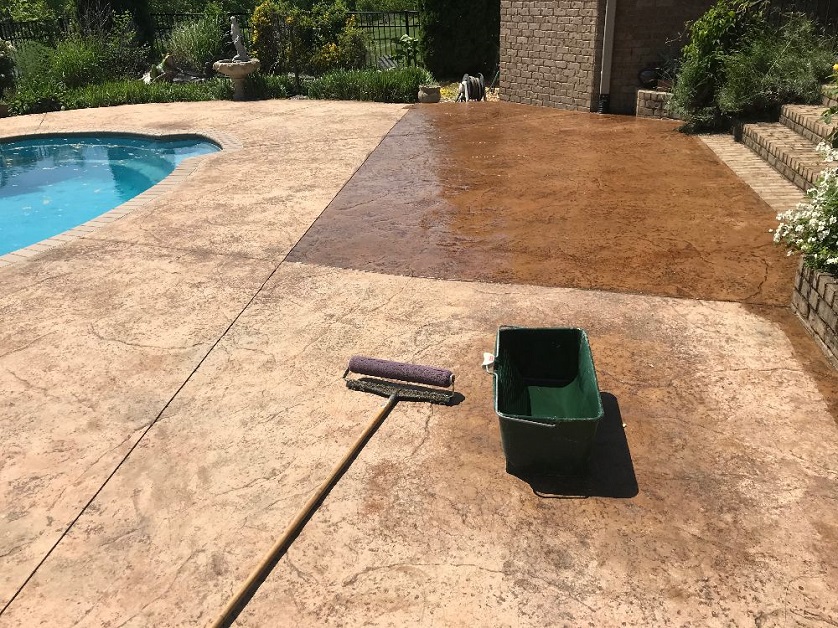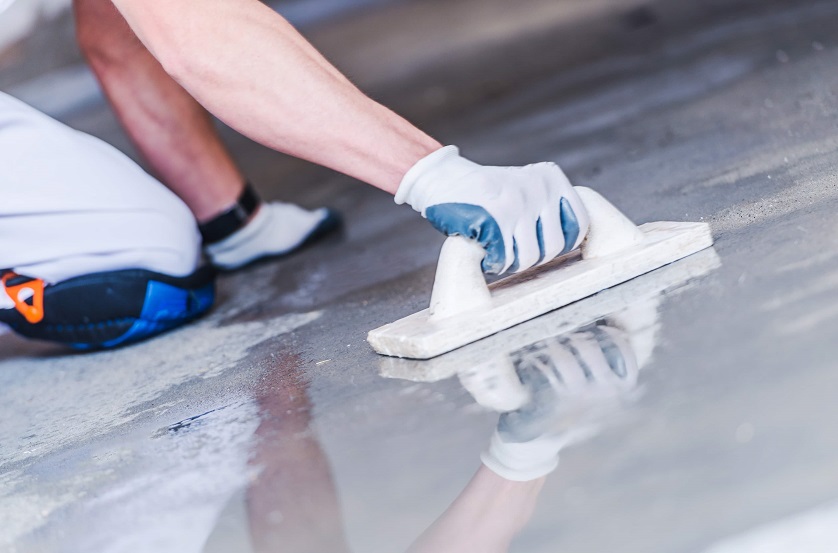If you own a house, a large part of your outdoors is probably covered with concrete. However, this material requires some maintenance if you want to avoid cracks, deterioration and staining. Because of its porous nature, concrete absorbs water, soluble salts and other substances, which can be destructive. Apart from that, when it has steel reinforcement embedded to increase its strength, its absorption can cause corrosion issues. A typical solution for solving this and many other problems is applying a concrete sealer. These not only protect your concrete surfaces, but also give them a glossy finish. They can also be mixed with tints to give the concrete a subtle stylish colour.
Contents
What are the Benefits of Using a Concrete Sealer?
- It repels moisture – When concrete is exposed to constant moisture, it will grow mould and moss which can weaken it. Applying a sealer will help repel moisture and prevent the growth of moulds;
- Stops the colour from fading – Sealers help maintain the colour of the concrete over time and make the surface look vibrant and shiny;
- Prevents cracks;
- Prevents stains – Your driveway, patio, garage and pool deck are areas that are at constant risk of getting stains. Sealing the concrete makes it stain resistant. You only need to wipe the stain and it will look as if nothing happened;
- Prolonged lifespan – Sealed concrete has a significantly longer lifespan – it can last for over 30 years.
What are the Different Types of Concrete Sealers?

There are 5 different types of concrete sealers: acrylic, penetrating sealers, polyurethane, epoxy and polyaspartic sealers.
Acrylic Concrete Sealers
The most widely preferred concrete sealer with a straightforward a quick application is the acrylic sealer. They possess great recoating abilities, and some of them are ultraviolet resistant. Even though they’re thinner than other types of sealers, they don’t allow anything to slip through. On the other hand, this means that they need to be reapplied once every couple of months. Acrylics function well against moisture, de-icing salt and chemical or oil absorption. This type can be used both as an indoor and outdoor concrete sealer. Acrylics improve the colour of the concrete and they dry fast. The two main types of acrylic sealers are water-based acrylics and solvent-based acrylics.
Water-based acrylics are sealers that are suspended in water. They don’t release harmful vapours, they’re safer for workers and are easier to apply. Compared to solvents, they’re more durable and reduce issues like bubbling and roller marks.
Solvent-based acrylics include those that are suspended in a solvent. These are mostly preferred for outdoor applications. They enhance the concrete’s colour by providing a darkening effect.
Penetrating sealers
This type of sealer is meant only for exterior surfaces. They absorb into the concrete, providing invisible protection from outside influences without changing their appearance. Penetrating sealers include silane, silicate and silicone sealers.
Silane sealers require a thick application in several coatings. After that, they offer protection for up to 8 years. This type is often used in parking garages and vertical surfaces.
Silicates serve to harden and increase the density of concrete surfaces. They don’t alter the look of the surface and retain their natural appearance.
Silicones are short-term sealants that offer temporary protection and have to be used for recoating at regular intervals. This is a common concrete wall sealer for surfaces that need regular cleaning and as protection against graffiti. On the other hand, they’re not recommended for horizontal outdoor concrete surfaces.
Polyurethane Sealers
Polyurethanes offer stiff protection and are almost twice as thick as acrylic sealers. Just as acrylics, they can be divided into water and solvent-based. They’re mostly used on exterior surfaces because of their strength and durability. Polyurethanes aren’t moisture tolerant and contain volatile organic compounds. Because of this, they should be applied with care and the worker is required to wear a respirator.
Epoxy Sealers
The epoxy concrete sealer offers a thick and long-lasting protective layer. They’re mostly meant for indoor use because they’re vulnerable to ultraviolet rays which cause stains. They’re often used for concrete floors, but also concrete countertops and kitchen surfaces. Epoxies easily mix with colour pigments and leave behind a glossy surface, making them ideal for designing purposes. Apart from this, they’re used for flake and metallic flooring in industrial areas and hospitals.
Polyaspartic Sealers
Polyaspartics are recently introduced sealers that provide many advantages. They can withstand any temperature and can dry in just half an hour. They bond smoothly with the concrete surface and provide resistance to ultraviolet rays and staining. Polyaspartics offer bubble-free surfaces in high humidity, as opposed to polyurethane sealers that are moisture sensitive. They contain low to no volatile organic compounds which allow safe application. They offer more protection than polyurethanes and epoxies. The finish is crystal clear and resistant to stains. Polyaspartic sealers are popular for both indoor and outdoor use, provided that you have traction aid if you’re using them externally. They’re mostly used for laboratories, industrial spaces, homes, shopping centres, as well as other sites that require a quick turnaround time.
How To Apply a Concrete Sealer?

Before you apply a sealer, you need to make sure that the concrete is properly cured. It takes around 28 days for it to fully cure, however, some sealers are specially manufactured to both cure and seal the surface (these are acrylic-based sealers that contain styrene). To help you with your concrete sealing, here are seven steps you should follow:
- Clean the concrete from oil, grease, dirt, stains and dust;
- Strip the surface of any existing sealer;
- Open up the concrete with an etching solution;
- Using a roller or sprayer, apply a thin layer of the sealer;
- Wait the recommended time for the layer to dry;
- Apply the second layer, but in the opposite direction;
- Before you walk or drive on the concrete surface, allow the sealer to completely dry.
Bottom Line
Applying a sealer on your concrete surfaces will protect them from various weather conditions and accidental physical damage. It will also make them more durable. It’s important to choose the right type of sealer depending on the surface you’re planning to use it on. Acrylic sealers are most common for patios and driveways, while epoxy sealers work best for countertops. They can be easily tinted if you want to give your concrete surfaces a more stylish look.












